Against a dusty-white background, black and magenta threads tell an intricately
embroidered story: the story of a son imprisoned behind bars.
At the top of the piece is a large, brightly pink
flower with dots of orange, green, and blue. While the flower seems to
symbolize growth and hope, its center is crisscrossed with a black web of
prison bars.
اضافة اعلان
This work of embroidery was displayed at the
Palestinian Culture Center’s 12th annual exhibition, titled “The Palestinian
Story”, in Amman.
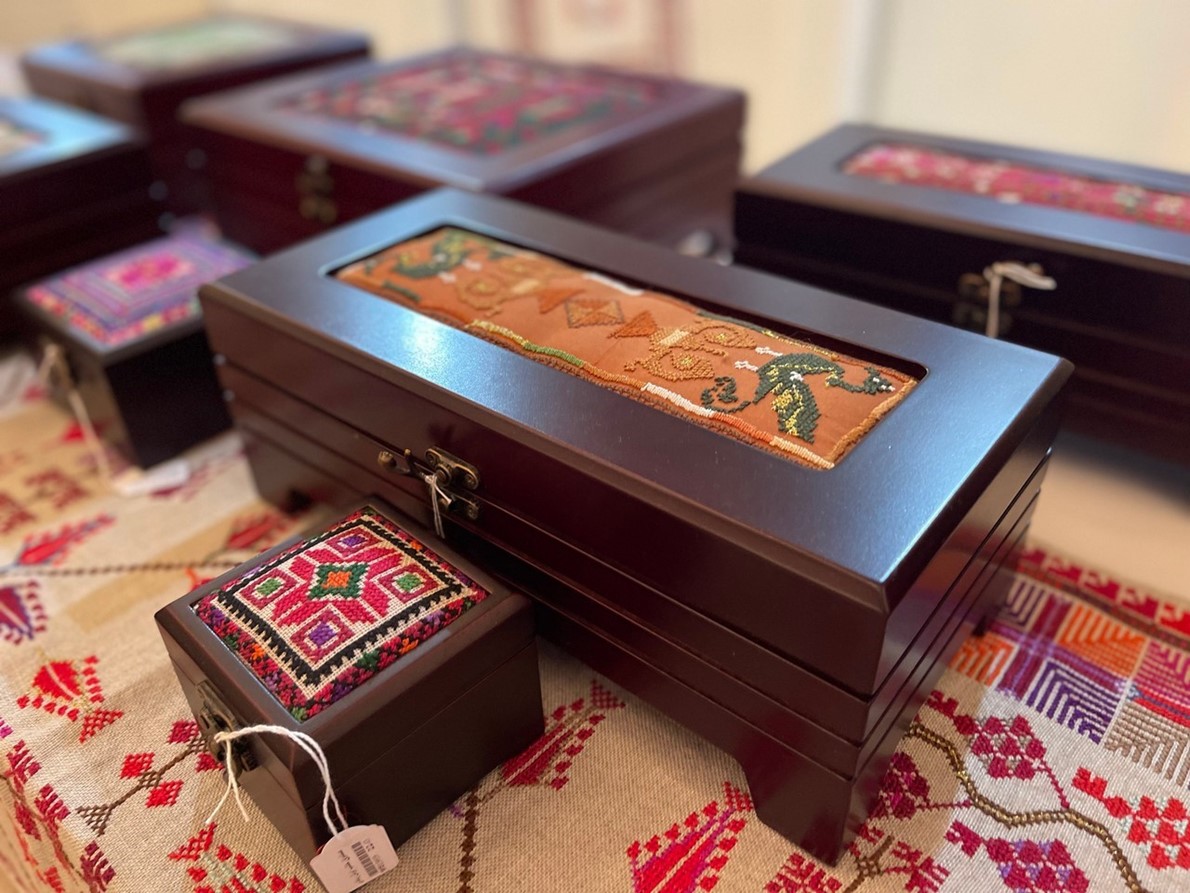
It was crafted by a Palestinian mother during one of
the intifadas. Her son was a prisoner in Israeli jails, “so when the intifada
started, she filled in the flower with prison bars for her son — she told her
story with the embroidery”, said President of the Palestinian Culture Center
Mariam Jaber.
The exhibit, which ran from Thursday to Saturday,
showcased a variety of Palestinian goods, including ceramics, books, wooden
pieces, embroideries, accessories, and traditional clothes, in addition to an
array of national dishes.
Jaber spoke about this year’s theme: “It’s all in
the name. We wanted to shed light on some of the heroes of different
Palestinian stories during the difficult circumstances recently.”

“For example, there is the assassination of the
Palestinian journalist Shireen Abu Akleh; the mother of the Palestinian martyr
Ibrahim Al-Nabulsi, who carried her son’s coffin while smiling; the little
Palestinian boy who died, literally frightened to death as he was chased by
Israeli soldiers; we also focused on the prisoners in the Israeli prisons,” she
told
Jordan News.
The theme was visible throughout the exhibit, with
posters depicting Palestinian stories through images and words, some showing
Israeli forces targeting, executing, and imprisoning children (over 100
thousand since the first uprising).
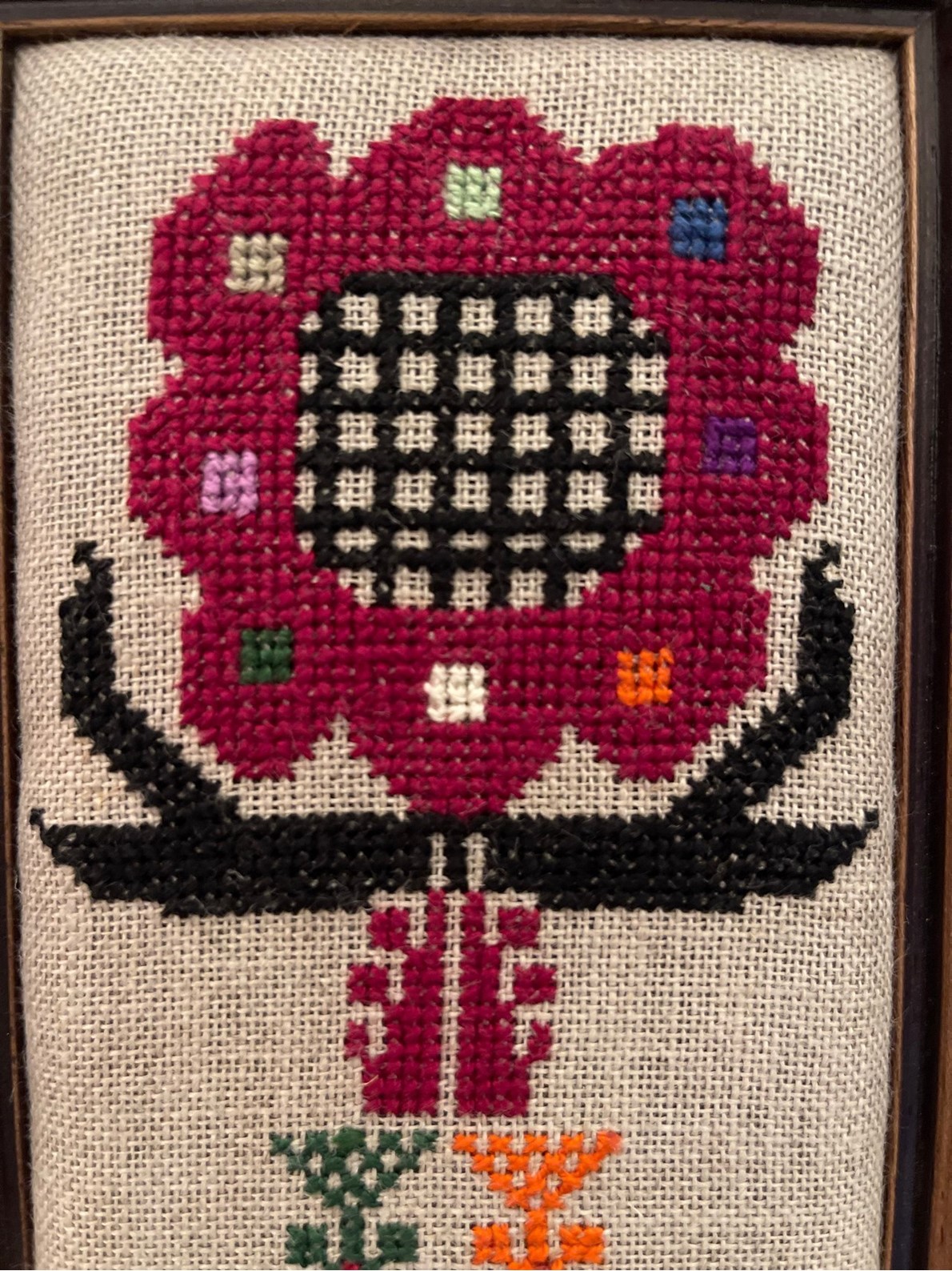
One poster talked about Israel breaching UN
conventions by uprooting Palestinian inhabitants, confiscating their property,
and occupying their land. Another explained the attacks on religious holy
places, violating the sanctity of Islamic and Christian sites in Jerusalem and
Hebron, razing structures to the ground, and destroying artifacts.
A third poster was dedicated specifically to explaining
how Israel contaminates the ecology of the Palestinian territories: disposing
35 tonnes of chemical, military, and fossil fuel waste at 34 sites, channeling
gray sludge from Israeli settlements, disposing of nuclear waste from Demona
nuclear reactor around the villages south of Hebron.

“Our media department highlighted several
Palestinian stories through these posters, and we plan to continue doing so
each year so we can achieve the center’s goal of keeping our heritage alive,”
the president explained.
When first entering the exhibit, booths containing a
rainbow of colorful embroideries met the eye.
The bright threads traced ornate patterns across
pillows, blankets, t-shirts, and wall hangings, as well as cups, boxes, and
trays of various sizes and prices. Even keychains and bracelets boasted the
intricate Palestinian Tatreez (embroidery).
It’s all in the name. We wanted to shed light on some of the heroes of different Palestinian stories during the difficult circumstances recently.
“We try to include the embroideries on new items
that people use nowadays on a daily basis — it’s how we try to ‘modernize’ our
culture to make it available everywhere”, Jaber explained.
Samah Ali, a volunteer at the exhibit, commented on
the embroideries: “This helps empower our women financially because they get to
work from home and then benefit in return. We have grandmothers, mothers, and
even daughters working together,” she said.
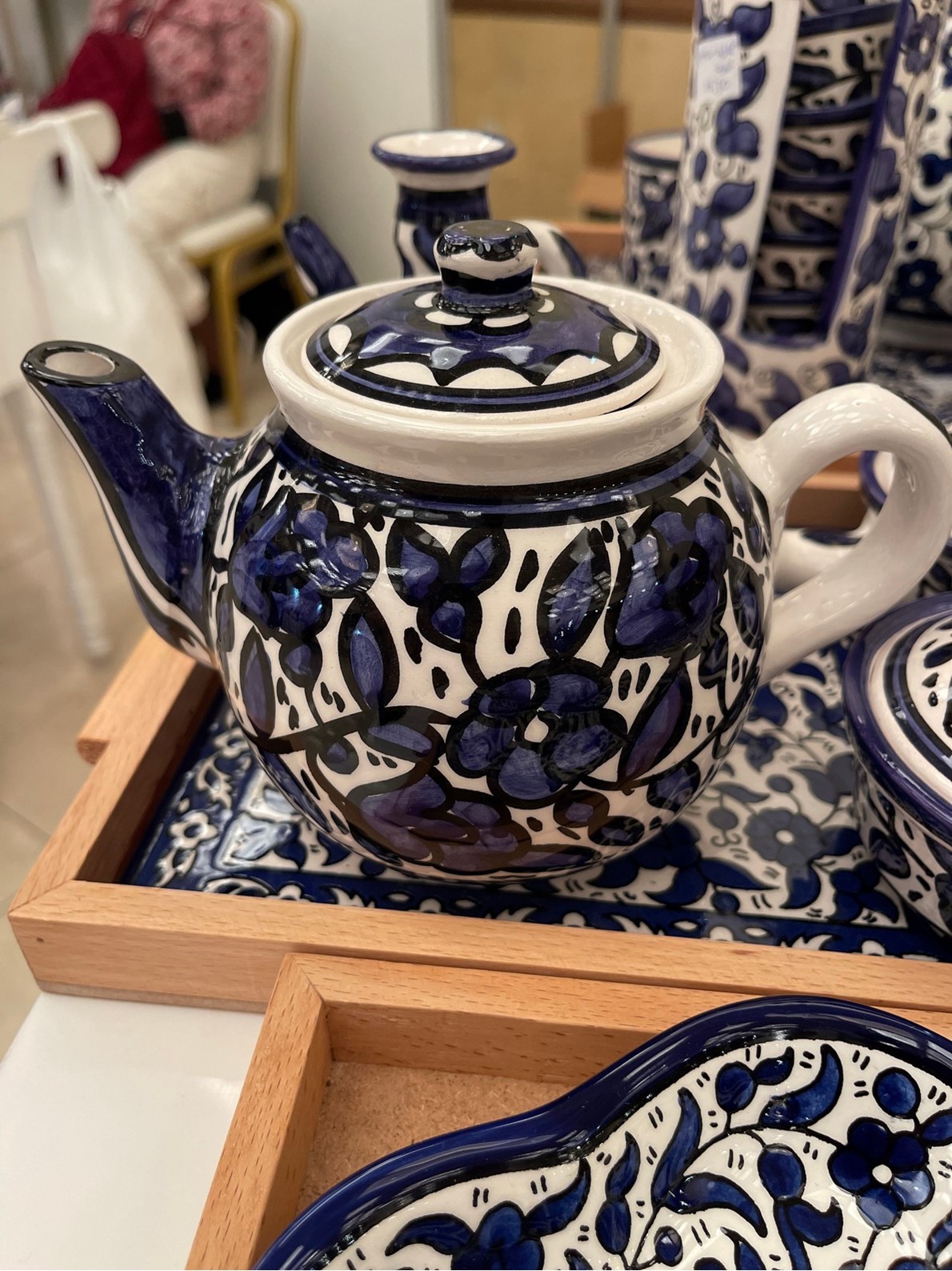
“We offer them the materials needed for the
embroideries, they take their time making them, then they give them back to us
so we can sell them,” Ali added.
The designs are tailored to different tastes, she
said. Some styles, like those with blue designs, are more popular with
foreigners, while Arabs prefer patterns stitched in red and pink.
Silver necklaces, bracelets, rings, and earrings of
traditional craftsmanship shone from another corner.
“Each city has its own ring,” said Jaber. “As for
the other accessories, Palestinian ladies used to wear them with the
traditional clothing, but now they fit even the modern style.”
One section featured ceramics and wooden pieces from
Hebron.
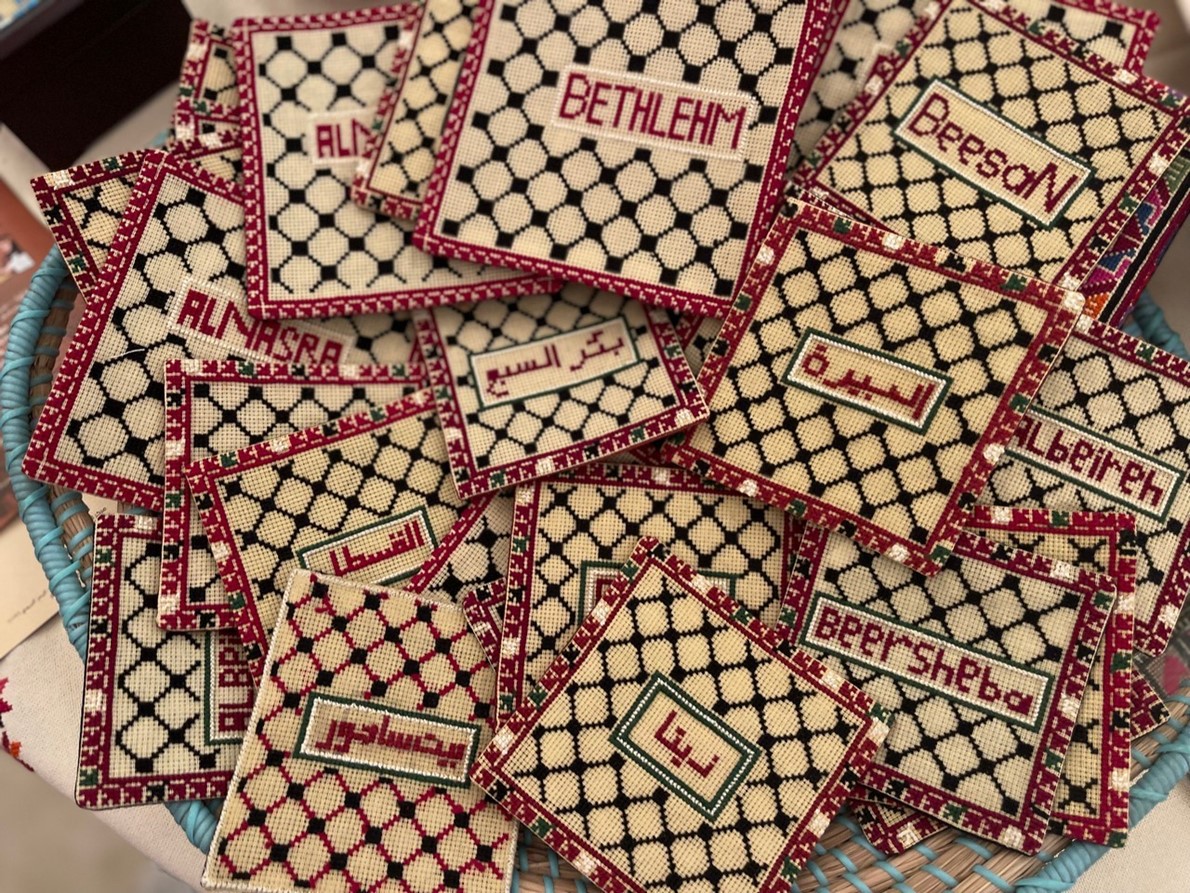
“We import these ceramics specifically from Hebron
so we can support their factories. Everything that you can see in this section
is handmade and crafted carefully,” the president said.
“We do not want the factories to close down so we
sell these here,” she added.
The exhibition’s food section showcased Palestinian
national dishes like Musakhan, Maftoul, Safiha, salads, stuffed vine leaves,
baked goods, Palestinian sweets, pickles, and spicy sauces.
“The food is made by our ladies and ‘grandmas’ at
the center. What makes it special is that all of it was made with love. It is
their culture, and they are passionate about it,” said Jaber.
The center’s kitchen is open year-round for
delivery, takeout, and special orders, she added.
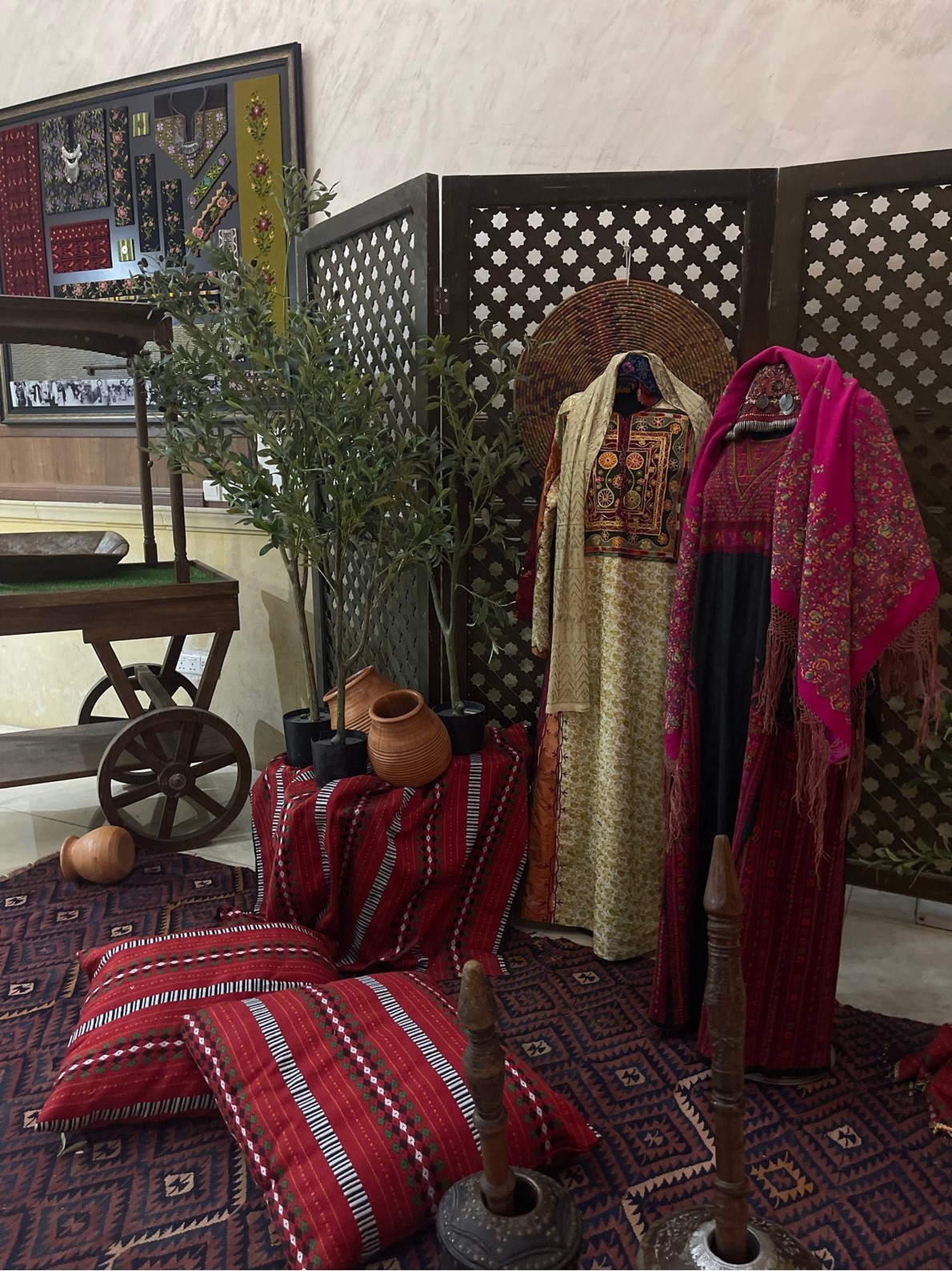
One visitor, Federico Bergua from Spain, commented
on the posters all around the exhibit: “The signs are very harsh and
eye-opening; I did not know most of these things are happening.”
“I heard about the exhibit from my parents, who have
always been inspired by Palestinian culture. For me personally, I am mainly
inspired by their fight for freedom, so when I heard about the exhibit I had to
come,” he added.
The exhibit was organized in cooperation with the Embassy of
Palestine in Jordan and the Jordanian Construction Contractors Syndicate.
Read more Fashion
Jordan News




